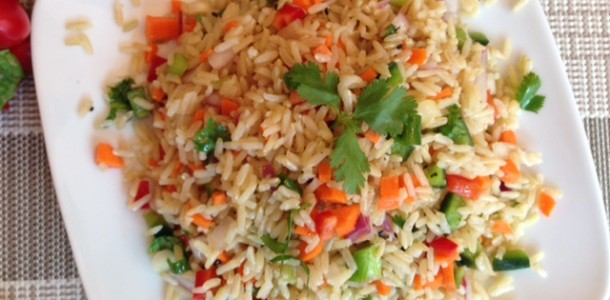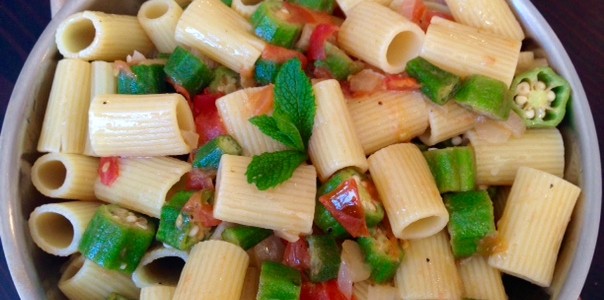This delicious rice gets its yellowish hue from saffron and its slightly-sweet flavor from honey. I think this dish lies somewhere between Paella and the exquisite rice found in Persian cuisine.
The only problem is that once you taste this Saffron Rice with Honey, you’ll go over your limits. But don’t take my word for it – just make it and see for yourself!
Prep time: 25 to 30 minutes
Serves: 4 to 6
Ingredients:
4 tablespoons olive oil
1 medium brown or white onion, finely chopped
1 cup Basmati rice, rinsed under cold water and drained
1-1⁄2 cups chicken broth
3⁄4 to 1 cup cold water
0.375 grams ground Saffron
3⁄4 to 1 teaspoon salt
Dash ground cinnamon
2 to 3 tablespoons honey or a little more
Directions:
1. In a 10-inch nonstick skillet, heat the oil.
2. Add the chopped onion and stir-fry on medium-high heat for 3 to 4 minutes.
3. When onion is golden brown, add the rice.
4. Stir-fry the rice and onion for 2 to 3 minutes.
5. After 2 to 3 minutes, add 1-1/2 cups chicken broth and 3⁄4 cup cold water, the saffron, salt, cinnamon and honey.
6. Immediately set heat on low, cover the rice and bring it to a boil.
7. When rice comes to a boil, stir it ONCE.
8. Cover the rice again and cook on the lowest heat setting for 10 minutes.
9. After 10 minutes, using a spoon, taste rice from center of skillet.
10. If rice is a little raw and dry, add the remaining 1⁄4 cup water, cover and cook for an additional 3 to 4 minutes.
11. After 3 to 4 minutes, taste rice again – if it is too firm, add 1 to 2 tablespoons more water.
12. At this point, cook rice for 1 to 2 more minutes.
13. After 1 to 2 minutes, taste rice (it should be tender but not overcooked). If needed, add a little more honey, to taste.
14. If rice is done, set skillet aside on a cold burner and cover the rice.
15. Let rice stand 4 to 5 minutes.
16. After 4 to 5 minutes, serve rice as a side dish to meat, poultry, fish or as part of a vegetarian meal.
Text & Photograph ©2016 Nancy DeLucia Real






 Nancy DeLucia Real is an art historian and chef. She has led culinary courses at the Italian Cultural Institute and is a member of the Culinary Historians of Southern California. Nancy's gastronomy training took place in the heart of Italy under the tutelage of her grandmother. She has taught international cuisine at Williams Sonoma and Sur la Table Stores. Nancy's art history & culinary courses are ongoing at various institutions. She also teaches private cooking classes.
Nancy DeLucia Real is an art historian and chef. She has led culinary courses at the Italian Cultural Institute and is a member of the Culinary Historians of Southern California. Nancy's gastronomy training took place in the heart of Italy under the tutelage of her grandmother. She has taught international cuisine at Williams Sonoma and Sur la Table Stores. Nancy's art history & culinary courses are ongoing at various institutions. She also teaches private cooking classes. 

